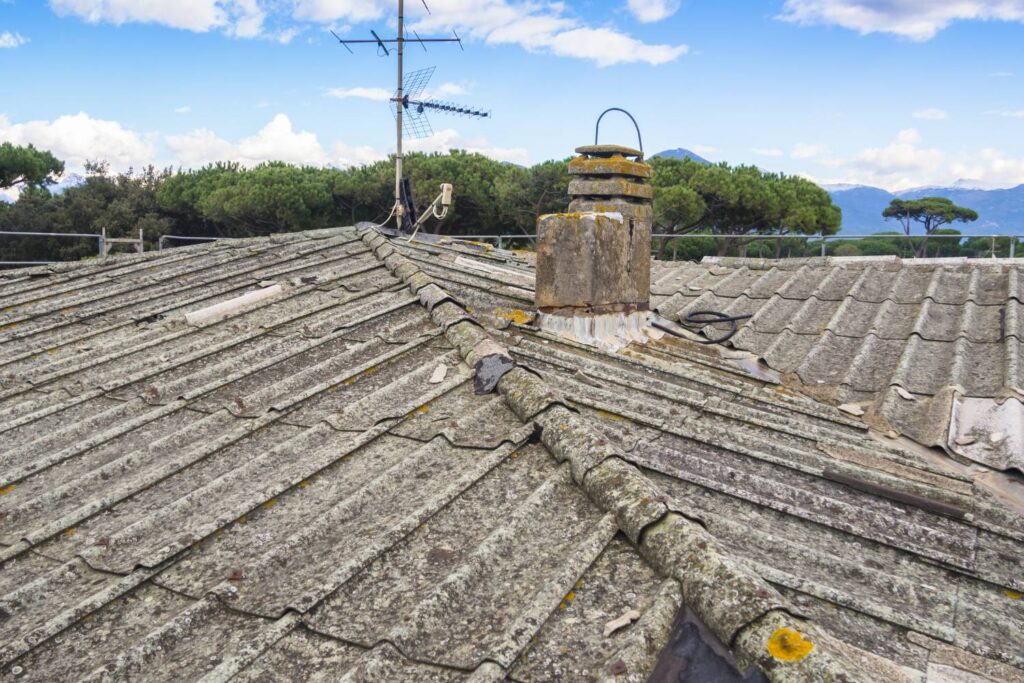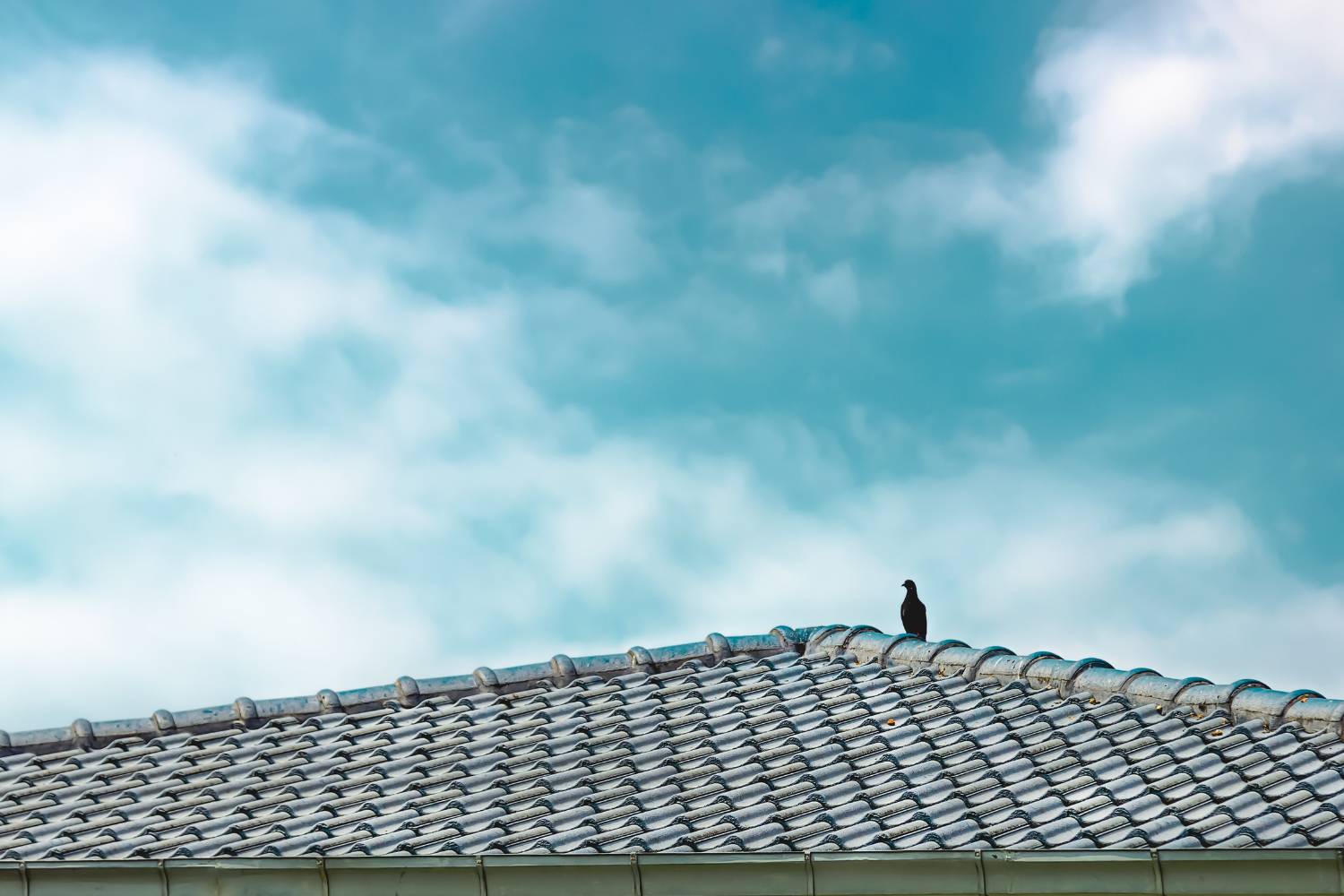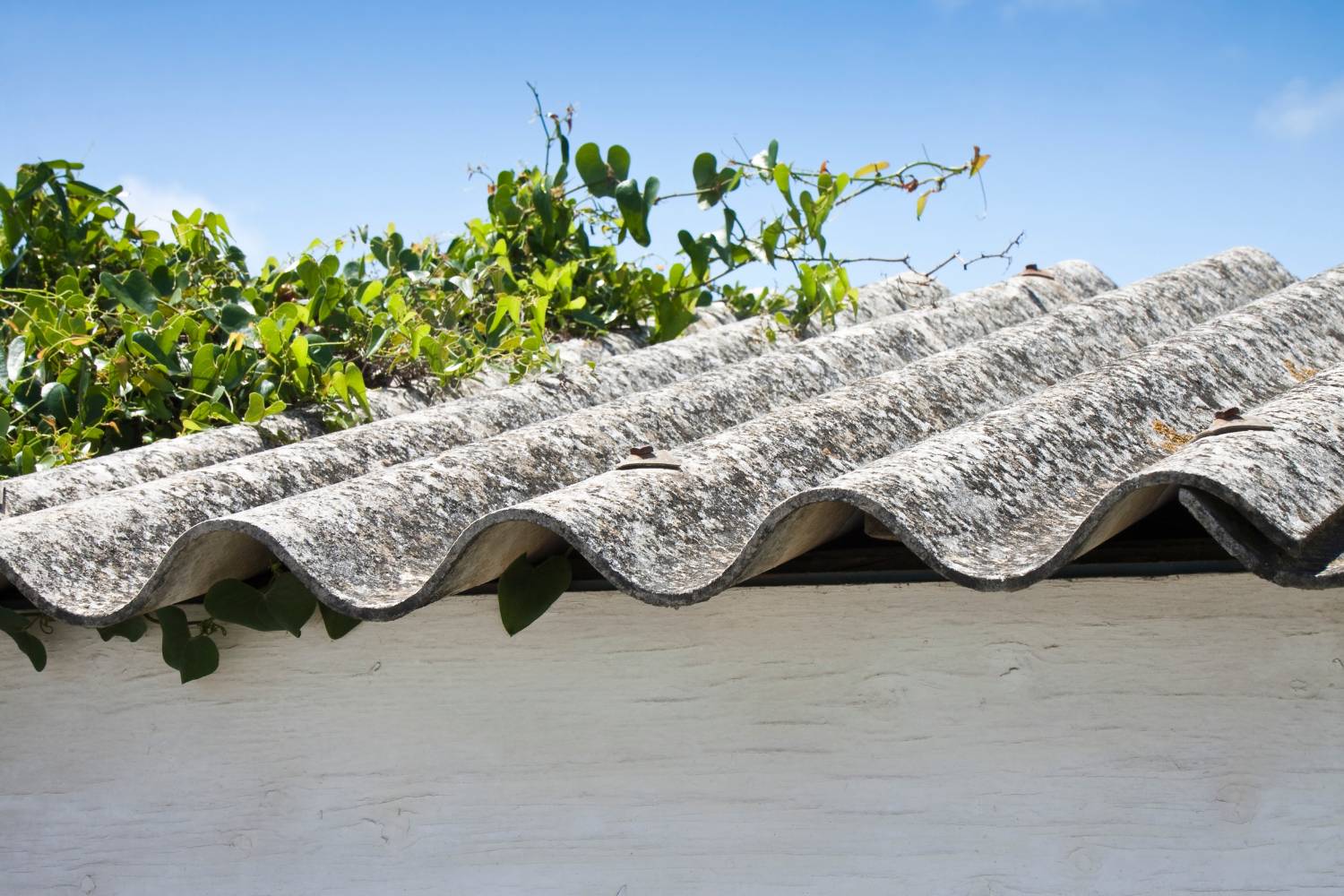Ignoring roof cleaning may seem like a minor oversight, but the repercussions can be significant and far-reaching. From immediate aesthetic impacts to long-term structural and health hazards, the consequences of neglecting this essential maintenance task can escalate quickly.
In this post, we'll delve into the various effects of not cleaning your roof, offering expert insights into the immediate and long-term damage that can occur. Understanding these risks is crucial for homeowners aiming to preserve their property's value, appearance, and safety.
Let's explore why regular roof cleaning is more than just a chore—it's an investment in your home's future.
What Are The Immediate Effects Of Not Cleaning Your Roof?
Neglecting to clean your roof can have immediate and long-term consequences, affecting both the aesthetics and the structural integrity of your home. Here’s a detailed look at the immediate effects of not cleaning your roof, compiled from expert sources:
Growth Of Algae, Moss, And Mould
- Algae Growth: Algae, particularly blue-green algae, thrive in humid environments. They cause unsightly black streaks and can wear away the protective coating on shingles, leading to a shorter roof lifespan.
- Moss Development: Moss holds moisture against the roof, causing shingles to lift and potentially rot. Moss is easily identifiable by its fuzzy green patches.
- Mould Formation: Mould grows in damp conditions and can cause health issues. It appears as brown, black, or green patches on the roof and can spread to the interior of your home, leading to structural and health problems.
Damage To Shingles
- Shingle Deterioration: Accumulated dirt, debris, and organic growth can damage shingles. Damaged shingles are less effective at protecting your home, leading to potential water damage, increased energy bills, and structural issues.
- Water Leakage: When shingles are broken or loose, water can seep into your home, especially during heavy rain, causing interior damage and promoting mould growth.
Increased Energy Costs
- Heat Absorption: Algae and dirt can darken the roof, increasing heat absorption. This raises the temperature inside your home, leading to higher cooling costs during hot weather.
Decreased Curb Appeal
- Aesthetic Issues: A dirty roof with black streaks, moss, and algae growth looks unattractive and can lower the overall appearance of your home. This can be a significant drawback if you plan to sell your property, as it reduces curb appeal and market value.
Pest Attraction
- Pest Infestation: A dirty roof can attract pests like ants, bees, mice, rats, squirrels, termites, and birds. These pests are drawn to the organic matter on the roof and the moist environment created by moss and algae.
Warranty Issues
- Warranty Voids: Many roof warranties require regular maintenance, including cleaning. Neglecting this maintenance can void the warranty, leaving you unprotected against defects or damages.
Structural Damage And Rot
- Wood Rot: Leaves and debris trapped on the roof can hold moisture, leading to wood rot under the shingles. This can compromise the structural integrity of the roof.
- Leakage and Rot: Continued neglect can result in leaks and extensive rot, necessitating costly repairs or even roof replacement.
How Does Neglecting Roof Cleaning Lead To Roof Damage?
Maintaining the cleanliness of your roof is crucial for preserving its structural integrity and overall functionality. Neglecting roof cleaning can lead to numerous problems, each with significant consequences. Below, we explore the primary risks associated with ignoring roof maintenance, drawing from multiple sources.
Structural Damage
One of the most significant risks of neglecting roof cleaning is the potential for structural damage. Moss, algae, and other organic growths retain moisture, which can seep into roofing materials. Over time, this persistent moisture can cause these materials to deteriorate, leading to rot and decay.
This weakening of the roofing structure can compromise its integrity, eventually necessitating costly repairs or even premature roof replacement. Additionally, blocked drainage caused by accumulated moss and debris can result in water pooling on the roof. This water can then leak into your home, causing significant damage to ceilings, walls, and electrical systems.
Health Hazards
Neglected roofs can also pose various health hazards. Excess moisture retained by moss and algae fosters the growth of mould and mildew, which can lead to health issues for the inhabitants of the home. Moreover, moss and debris on the roof can create an inviting habitat for pests such as insects, rodents, and birds. These pests can cause further structural damage and pose additional health risks to the household.
Decreased Property Value
The aesthetic appeal of your home can significantly diminish if roof cleaning is neglected. A dirty, moss-covered roof detracts from the overall appearance of your property, reducing its curb appeal. This unsightly condition can also decrease the market value of your home, as potential buyers may be deterred by the poor state of the roof. Consequently, the resale value of your property can be negatively impacted, making it harder to attract buyers and achieve a good sale price.
Safety Hazards
Safety hazards are another critical concern associated with neglecting roof cleaning. Moss-covered roofs can become extremely slippery, especially when wet, increasing the risk of falls and injuries for anyone attempting maintenance tasks. Additionally, if untrained individuals attempt to clean the roof, they may inadvertently cause more harm than good, potentially damaging the roof further or injuring themselves.
Cost Implications
The financial repercussions of neglecting roof maintenance are considerable. Over time, the accumulation of moss, algae, and debris can lead to extensive and expensive repairs due to water damage, structural decay, and pest infestations. Additionally, debris and moss on the roof can affect the home’s insulation, leading to higher energy bills as the house becomes less efficient at maintaining a consistent temperature.
What Are The Health Risks Associated With A Dirty Roof?
Maintaining a clean roof is crucial not only for aesthetic and structural reasons but also for the health and well-being of the occupants. Here are some significant health risks associated with a dirty roof:
Mould And Mildew Growth
- Health Impact: Mould and mildew can grow on dirty roofs, especially in damp and humid conditions. These fungi can cause various health issues, particularly for individuals with respiratory problems, allergies, or weakened immune systems.
- Respiratory Problems: Inhaling mould spores can lead to respiratory issues, such as asthma attacks, chronic bronchitis, and other lung infections. Mould spores can easily be carried into the home through air conditioning systems or tracked inside on shoes.
- Allergic Reactions: Mould exposure can trigger allergic reactions, including sneezing, runny nose, red eyes, and skin rashes. People with mould allergies may experience more severe reactions.
Bacterial Infections
- Algal Growth: Algae, particularly blue-green algae, can thrive on dirty roofs. While algae themselves are not typically harmful, they can create a breeding ground for bacteria, which can cause various infections if they enter the home environment.
- Health Risks: Exposure to harmful bacteria can result in skin infections, gastrointestinal issues, and other health problems, especially in children, the elderly, and individuals with compromised immune systems.
Increased Indoor Humidity And Associated Issues
- Moisture Retention: Moss and algae on the roof retain moisture, which can increase the humidity levels inside the home. High indoor humidity can create an ideal environment for mould and dust mites.
- Health Impact: Dust mites thrive in humid conditions and can exacerbate asthma and allergy symptoms. High humidity can also cause condensation on windows and walls, leading to further mould growth and potential structural damage.
Structural Integrity And Safety Hazards
- Wood Rot: A dirty roof can lead to the accumulation of leaves and debris, which can cause wood rot if not regularly cleaned. Rotting wood can compromise the structural integrity of the roof and increase the risk of it collapsing.
- Safety Risks: A compromised roof structure poses significant safety risks, including the potential for roof leaks, falling debris, and even roof collapse, which can lead to serious injuries or fatalities.
Pest Infestations
- Attraction to Pests: Dirty roofs can attract pests such as rodents, insects, and birds. These pests are drawn to the organic matter and moisture on the roof.
- Health Hazards: Pests can carry diseases and parasites that pose health risks to humans. For instance, rodents can spread the HIV virus, and birds can carry avian flu and other infectious diseases.
Energy Efficiency Issues
- Increased Heat Absorption: Algae and dirt on the roof can darken its surface, causing it to absorb more heat. This can increase the temperature inside the home, leading to higher energy consumption for cooling.
- Health Impact: Higher indoor temperatures can cause discomfort and heat-related illnesses, particularly in vulnerable populations such as the elderly and young children.
What Are The Environmental Consequences Of Not Maintaining Your Roof?
Maintaining your roof is not just about preserving its aesthetic appeal or structural integrity; it also has significant environmental implications. Neglecting roof maintenance can lead to various adverse effects on the environment. Let's explore these consequences in detail, drawing insights from multiple sources.
Increased Waste And Landfill Overload
One of the most significant environmental impacts of neglecting roof maintenance is the increased waste generated from premature roof replacements. When a roof is not properly maintained, it deteriorates faster, necessitating frequent replacements.
This process contributes to the consumption of raw materials, which increases the carbon footprint associated with manufacturing new roofing materials. Moreover, old roofing systems that are removed contribute tons of bulky waste to landfills, exacerbating the problem of landfill overload. By maintaining your roof and extending its lifespan, you can significantly reduce this waste and minimise your environmental impact.
Higher Energy Consumption
A poorly maintained roof can lead to increased energy consumption. When roofs are covered with dirt, grime, moss, or algae, their ability to reflect sunlight effectively diminishes. This reduced reflectivity means more heat is absorbed into the home, leading to higher reliance on air conditioning systems during warmer months.
This increased energy use results in higher electricity bills and a larger carbon footprint. Conversely, a clean and well-maintained roof can act as a natural thermal barrier, reflecting sunlight and maintaining a cooler home interior. This not only lowers energy consumption but also reduces greenhouse gas emissions from power plants.
Decreased Insulation Efficiency
Neglecting roof maintenance can also impact the insulation efficiency of your home. Damaged or deteriorating roofs can lead to gaps and leaks, compromising the insulation’s effectiveness. This inefficiency results in greater energy usage to maintain comfortable indoor temperatures, further increasing your home's carbon footprint. By ensuring your roof is in good condition, you enhance your home’s insulation and contribute to energy conservation.
Water Contamination
When roofs are covered in algae, moss, or debris, rainwater runoff can carry pollutants and toxins into local water systems. This contamination can harm plants, wildlife, and even human health. For homeowners who practise rainwater harvesting, a dirty roof means that the collected water is of poor quality and potentially harmful for various uses. Keeping your roof clean ensures that rainwater runoff remains free from harmful contaminants, protecting local ecosystems and promoting safer water reuse practices.
Urban Heat Island Effect
In urban areas, dirty and dark-coloured roofs can contribute to the urban heat island effect. These roofs absorb and retain more heat, raising the temperature of buildings and surrounding areas. This not only increases energy demands for cooling but also exacerbates local climate conditions, affecting air quality and human health. Clean, reflective roofs can help mitigate this effect by reflecting more sunlight and maintaining cooler temperatures, thereby contributing to a more sustainable urban environment.
Premature Roof Deterioration
Neglected roofs accumulate organic growths like moss and algae, which trap moisture and lead to rot and decay of roofing materials. This not only shortens the lifespan of the roof but also necessitates frequent replacements. Each replacement involves significant environmental costs, from the production and transportation of new materials to the disposal of old ones. Regular maintenance prevents such deterioration, prolonging the roof’s life and reducing the need for new resources.
Conclusion
Neglecting roof cleaning is more than just an oversight; it’s a decision with far-reaching consequences. From immediate aesthetic issues to serious structural damage, health risks, and environmental impacts, the costs of ignoring this vital maintenance task can be substantial.
Regular roof cleaning is essential for maintaining your home's integrity, energy efficiency, and curb appeal. By staying proactive and addressing roof cleaning regularly, you not only protect your investment but also ensure a safe, healthy, and sustainable living environment. Investing time and effort into roof maintenance today can save you significant costs and headaches in the future.
Frequently Asked Questions
Ignoring roof cleaning can lead to several issues, including the growth of moss, algae, and lichen, which can damage roofing materials. Over time, this can cause leaks, rot, and structural damage, necessitating costly repairs or even a full roof replacement.
Neglecting roof cleaning can significantly shorten the lifespan of your roof. Debris buildup and biological growths trap moisture, which can deteriorate shingles and other roofing materials. Regular cleaning helps preserve the integrity of the roof, extending its lifespan.
Yes, a dirty roof can negatively impact your home’s energy efficiency. Accumulated debris and biological growths can block roof ventilation systems, causing heat to become trapped in your attic. This can lead to higher cooling costs in the summer and reduce overall energy efficiency.
A neglected roof can harbour mould, mildew, and other allergens, which can infiltrate your home and affect indoor air quality. This poses health risks, particularly for individuals with respiratory conditions or allergies.
Yes, a poorly maintained roof can significantly reduce your property value. Prospective buyers are likely to be deterred by visible signs of neglect and potential underlying issues, making it harder to sell your home or get a good price for it.


